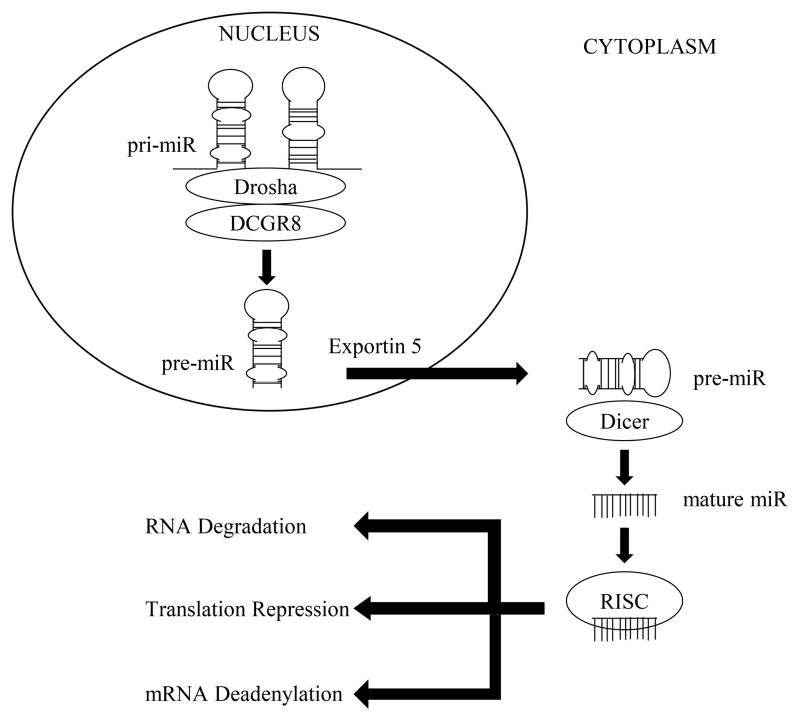Figure 1.
microRNA Biogenesis; Biogenesis of miRNA begins in the nucleus of the cell where RNA polymerase II transcribes primary-miRNA (pri-miRNA), consisting of thousands of nucleotides with stem-loop structures. The enzyme Drosha, a member of the ribonuclease (RNase) III superfamily of double-stranded RNA-specific endoribonuclease, together with DiGeorge syndrome critical region gene (DGCR8), cleaves the stem-loop structure of the pri-miRNA to form precursor miRNA (pre-miRNA). Conversion of pri-miRNA to pre-miRNA is a critical step, as it is site-specific, dictating the sequence of the mature miRNA. The pre-miRNA translocates out of the nucleus into the cytoplasm by small RNA transporter Exportin 5, which is a GTP dependent process. Once in the cytoplasm, pre-miRNA is processed by Dicer, another enzyme in the RNase III family, to form mature miRNA. One strand of the mature miRNA is bound by Argonaute, a protein that directly binds to miRNA, forming a protein complex called RNA-induced silencing complex (RISC), allowing miRNA to bind to target mRNA, resulting in post-transcriptional modifications that repress the translation of protein

